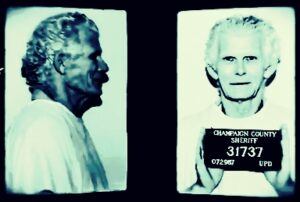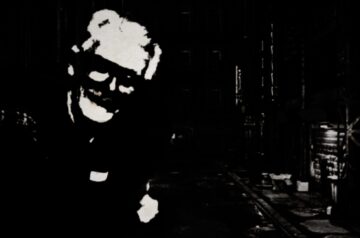John David Norman, born on October 13, 1927, in Ada, Oklahoma, remains an elusive figure. Not much information is available about his formative years or family background, which adds a layer of mystery to an already sinister life. It’s believed he served in the military during the 1940s, though the specifics are unclear.
Norman’s own claims provide a patchy narrative of his early adult years. He mentioned being a TV commercial producer and a school teacher, though these accounts are rather nebulous. Without substantial evidence, these claims cannot be verified, leading to further questions about his life’s early trajectory.
Understanding the early years of such a person can be crucial for comprehension. In historical and criminal research, a subject’s background often offers clues about their later behavior. In Norman’s case, the gaps and uncertainties in his early life make it difficult to ascertain what might have influenced his descent into criminal activity. However, looking into the societal norms and psychological factors of the time can provide some context .
The Odyssey Foundation and Arrests in the 1970s
John David Norman’s criminal pursuits came glaringly into view in the 1970s, attracting substantial attention from law enforcement . In August 1973, the Dallas police raided his apartment at 3716 Cole Avenue, acting on a tip from a San Francisco man. The raid uncovered unsettling evidence of Norman’s activities. Police found booklets bearing the name ‘International’ with photographs and contact information of teenage boys and young men.
In addition to the booklets, the authorities discovered 30,000 index cards at Norman’s apartment, cataloging between 50,000 and 100,000 clients. The sheer scale of these records hinted at the extensive reach of Norman’s operation, named the Odyssey Foundation. Following Norman’s arrest, investigators explored potential ties with other criminal figures, notably serial killer Dean Corll. According to Elmer Wayne Henley, Corll’s accomplice, Corll claimed involvement with a Dallas-based organization that ‘bought and sold boys,’ suggesting a chilling connection to Norman.
Once released, Norman fled to Homewood, Illinois, menacingly continuing his operations. On October 31, 1973, an anonymous tip led the Homewood Police to arrest ‘Steve Gurwell’—an alias used by Norman—for sexually abusing boys. In this raid, police confiscated 20,000 pink index cards bearing customer names from various states and countries.
During his incarceration in Cook County Jail, Norman met Phillip Paske. Together, they exploited the prison’s printing press to publish a newsletter named Hermes, also known as The Delta Project. Norman asserted that The Delta Project aimed to provide educational and development opportunities for young men. Despite his claims, the project’s activities raised suspicions and suffered comparisons to the Odyssey Foundation, reinforcing doubts about Norman’s intentions.
Studying the events and implications of Norman’s 1970s activities helps us understand how he managed to operate such a vast and sinister operation. This examination underscores the importance of vigilant, coordinated law enforcement efforts and raises questions about how such networks can thrive unnoticed, emphasizing the need for ongoing vigilance in protecting vulnerable populations.
Continued Criminal Activities and Arrests
Even after his initial arrests and imprisonments, John David Norman didn’t cease his disturbing activities. Paroled in the fall of 1977, he returned to his criminal ways. By June 1978, he was arrested in Chicago for engaging in sexual acts with two underage boys from a local foster home. This arrest further solidified his pattern of exploitation and deceit.
Norman’s name surfaced again due to allegations tying him to another notorious figure, serial killer John Wayne Gacy. Norman’s associate, Phillip Paske, had briefly worked for Gacy’s construction business, sparking rumors that the two collaborated in the production of snuff films involving young boys. Although concrete evidence remains elusive, these alleged connections added to the grim narrative surrounding Norman.
Norman’s criminal timeline continued with his arrests in Denver on February 26, 1982, and again on June 10, 1988, for sex-related crimes. Notably, he was known as ‘Colonel,’ a nickname often associated with high-ranking figures in human trafficking networks. Between October 1983 and May 1984, he produced and published ‘Handy Andy,’ a obscene pornography magazine, from his home in Pennsylvania. After a raid on May 31, 1984, he fled the state but was eventually caught in Bolingbrook, Illinois, in October 1984.
Norman’s maneuvers didn’t end there. He faced arrests in California for distributing obscene literature in 1995 and 1998. Despite being released from prison in 1999, he was deemed a sexually violent predator and detained indefinitely at Atascadero State Hospital. He remained there until his death in 2011.
The extensive criminal activities of John David Norman make clear the importance of vigilance and proactive measures in combating sexual exploitation. Authorities and communities must work together to identify, prevent, and prosecute such heinous crimes to protect the vulnerable and ensure justice for the victims. 











